What are Essential Oils and How Do You Use Them?
The popularity of essential oils has skyrocketed in recent years, but they aren’t new. Culture throughout history have found both therapeutic and medicinal uses for essential oils—and there are many ways to use them daily.
If you’re interested in adding more essential oil love to your life, here’s an overview of what essential oils are, the most popular varieties, and some of the best uses for them.
What are Essential Oils?
Essential oils are natural oils that come directly from plants. The oils are highly concentrated through distillation, where the oils are taken from several parts of the plant, including the bark, roots, and flowers.
The result is a potent oil with a high amounts of fragrance and beneficial properties for health and wellness.
Top Essential Oil Uses and Benefits
Aromatherapy, the use of plant oils and scents to promote optimal health and wellness (also known as essential oil therapy), is one of the main uses of essential oils. The idea is to use aromatherapy from essential oils to supplement and enhance and healthy lifestyle.
Essential Oil Quality Matters
Before we get into the best uses for essential oils, note that the quality of the essential oil matters. Only certain types of oils can be applied to skin, for example, while lower quality varieties can actually be harmful.
Research the company of any brand you choose and make sure the oils are taken from a pure source.
So, be sure to use a small amount at first to make sure you react well (if using on skin) and always use a carrier oil to dilute. Typically, dilution should be at about six drops per one tablespoon of oil, but here’s a good guide to diluting essential oils for different needs. Do not apply pure essential oil directly to skin without a carrier oil.
So, what are essential oils good for? Here are some of the most popular types of essential oils and their main uses for wellness.
Lavender Oil for Emotional Support
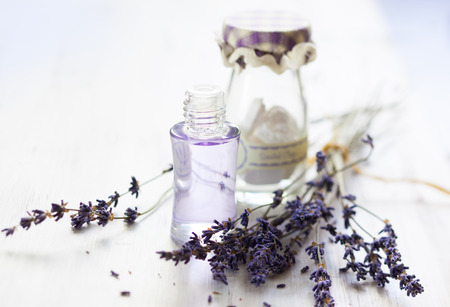
The calming effects of lavender essential oil make it a popular option for supporting a calmer mood, reducing stress, and fighting mental fatigue.
Lavender is also commonly used for improving appearance of the skin, such as on stretch marks and bruises, for boosting immunity, and for combating inflammation.
Many essential oils are used for not only calming the mind but also cleansing the skin with their antiseptic properties.
Lavender contains a high amount of linalool, a natural form of alcohol in spices and plants, which can be rough on sensitive skin. So try a small diluted amount to check for a reaction before using regularly on skin.
How to Use Lavender Essential Oil
To nourish your skin, relieve skin irritation, such as razor burns or sunburns, or soothe dry skin, use skin care products with lavender oil or add a couple drops to full bottles of your current products.
To sleep well and soothe your mood, diffuse lavender oil or add a few drops to your bedding or pillows. You can also apply it to your bottoms of your feet before bed or add a few drops to a bath.
To promote relaxation internally, look for recipes with lavender.
Lemon Oil for Cleaning and Disinfecting
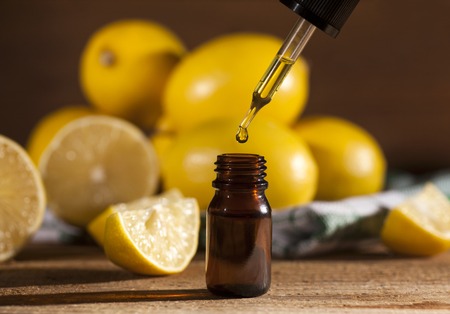
Many common household cleaners contain lemon or other citrus scents. It makes sense because citrus oils are light, refreshing, and uplifting!
Unfortunately, most of those scents in commercial products come from artificial sources. Lemon essential oil offers a natural alternative to fake citrus cleaning products with similar benefits.
Plus, lemon and other citrus fruits have promising antimicrobial and anti-fungal properties [1].
Lemon oil has also been used to support healthy lungs and digestion when used internally.
How to Use Lemon Essential Oil
Lemon can be used for cleansing both the body and home! Add it to a citrus vinegar cleaning solution for an all-natural cleaning alternative for surfaces in the home.
Lemon oil can also be diffused to purify the air in your home and provide a zingy, fresh scent all throughout.
Peppermint Oil for Headaches and Low Energy
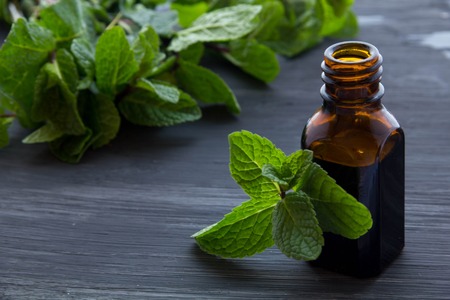
Peppermint is used in many common everyday items, such as toothpastes, gums, body washes, shampoos, and lotions.
People love the stimulating and cleansing smell of peppermint! That’s because peppermint oil contains high amounts of menthol and menthone, compounds that provide naturally minty tastes and odors.
Menthol is also used as a decongestant to relieve nasal congestion and an analgesic to relieve pain, making it an option for allergies, nausea, pain on the skin, and even mental focus due to its stimulating smell.
Because of the pain relieving and decongesting properties in peppermint oil, it’s often used for headache relief.
One study showed participants with tension headaches who had a peppermint oil-ethanol solution spread on their heads had a significant relief from pain within 15 minutes—and the pain reduction continued for an hour after [2].
How to Use Peppermint Essential Oil
For headaches, you can rub a drop of peppermint oil on your forehead, temples, head of the neck, and over your sinuses. (Just be very careful none gets in your eyes!)
For a stimulating smell that promotes alertness all day, add a couple under your nose—or look for chap sticks or lip balms made with peppermint essential oils.
For mild stomach upset, try inhaling or rubbing a drop on your stomach.
Some even use peppermint oil in the diffuser in the morning to increase energy and focus without the need to snack.
Lemongrass Oil to Soothe Stomach and Muscles
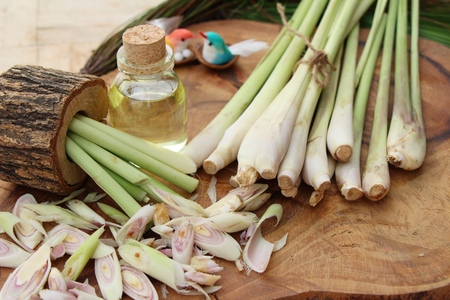
Lemongrass is a popular grass, with a very pleasing sweet, slightly lemony, and soothing smell. It’s often used often in Thai dishes, teas, and natural cleaning products.
Indians have used lemongrass for many years in healing remedies for fevers and stomach upset—and it has similar uses today as an essential oil.
Lemongrass oils can help support healthy digestion, soothe achy joints or muscles, and even acts as an insect repellent!
The results from one study on mice given essential oil from a lemongrass variety even indicated possible anti-cancer activity [3], although more research needs to be done.
How to Use Lemongrass Essential Oil
Lemongrass is a great essential oil to diffuse in your home, especially if you’re feeling uneasy or nervous (such as “butterflies” in your stomach) and need some calm or a more positive outlook.
If you need a “quick fix” of lemongrass, simple rub a drop on your hands and slowly inhale it.
To soothe the gastrointestinal tract, add a few drops of lemongrass to your favorite food (or look up good recipes using lemongrass) or drinks. It’s great combined with peppermint oil too.
To soothe your muscles or joints, add lemongrass oil to your body while gently massaging the affected area.
To repel pesky bugs in the home, add some drops outside your home, diffuse it inside or spray some on yourself if going out.
Cinnamon Oil for Cold Season and Achy Muscles
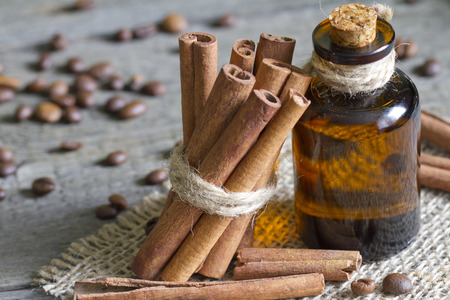
Cinnamon often makes us think of the sweet, musky, spicy vibes of fall, winter, and the holidays. It’s only fitting, then, that cinnamon essential oil works great for common cold-related complaints during the more frigid months.
Cinnamon oil is great for addressing chest colds, soothing aches and pains in the muscles, and working as a natural disinfectant for those winter germs.
Studies on cinnamon oil have even shown its strong naturally medicinal antioxidant potential [4].
How to Use Cinnamon Essential Oil
Cinnamon oil is great in a diffuser with other cozy oils like clove, cardamom, ginger, or orange.
You can also add a drop or two to hot tea or warm water to soothe the throat and support thriving immunity.
For cleaning around the home, add a few drops to a water-filled spray bottle.
Tea Tree Oil for Acne and Killing Bacteria
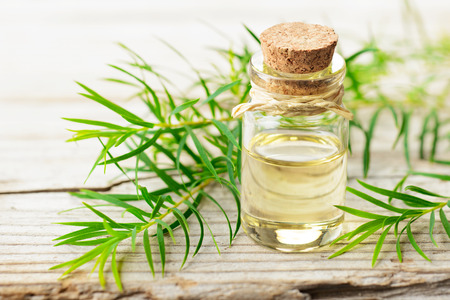
Tea tree oil is an amazing natural astringent, disinfectant, and bacteria killer, making it great for a varieties of health needs, especially on the skin, and cleaning uses. It’s been used for acne, mild dandruff, and even gum inflammation.
Tea tree is also used to address coughs, colds, and even sunburns.
How to Use Tea Tree Essential Oil
Use tea tree oil as an all-natural alternative to traditional acne treatments by applying a small amount to blemishes. Just make sure to dilute the oil before applying (such as wetting a cotton ball while adding a drop of the oil to it), as pure tea tree oil on skin is too potent.
For dandruff, add just 3-4 drops of the oil to your entire shampoo bottle. (You don’t need a lot and definitely shouldn't add it directly to your scalp!)
For colds and infections, boil a pot of water, add a few drops of tea tree oil, remove the water from the heat on the stove. Then carefully elevate your face over the pot with a towel over your head. Breathe in the oil-infused steam for about 10-15 minutes.
As you can see, there are a variety of natural applications for essential oils—and each has their own unique benefits and uses. Shop our large collection of essential oils and essential oil products to find what’s right for you!
Disclaimer: Statements made have not been evaluated by the FDA. Products are not intended to diagnose, treat, cure, or prevent any disease.
Recent Posts
-
Potassium Bromate: The Health Risks of This Sneaky Additive and How to Avoid It
Are you consuming a common bread additive that’s a possible human carcinogen?That additive is known …Dec 1st 2023 -
6 Huge Benefits of Meditation for Your Mind & Body
You’ve probably heard something about the benefits of meditation for your brain, body, stress levels …Nov 30th 2023 -
5 Natural Damaged Hair Treatments and Remedies for Healthy, Vibrant Hair Today
If your hair’s been exposed to products, appliances, dyes, or even toxic environment factors over th …Nov 30th 2023




